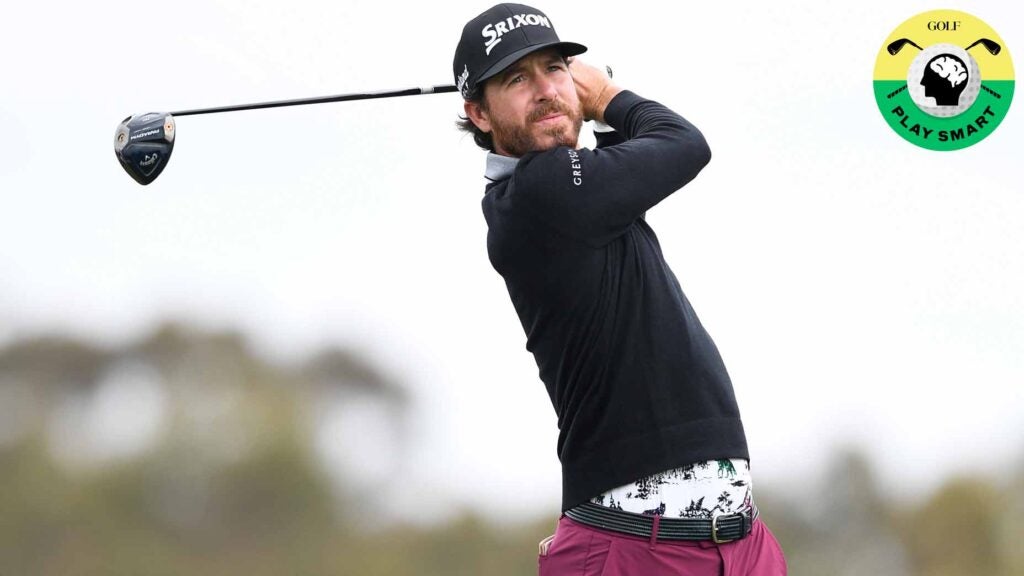Welcome to Play Smart, a regular GOLF.com game-improvement column that will help you play smarter, better golf.
Every golfer has some sort of pre-shot routine. It gets you in the right frame of mind. It helps you visualize the shot. And it tells your body that it’s time to perform.
If you don’t have a pre-shot routine, you’re probably leaving shots on the course. Watch any top-level player and you’ll see that they have a distinct process on every shot. And if the pros need a pre-shot routine to be successful, so do you.
If you watched any of last week’s Farmers Insurance Open, you probably had a healthy dose of Sam Ryder on your TV screen. He led the tournament for much of the weekend, and only a late stumble cost him his first Tour victory.
With Ryder’s group dominating the airwaves for much of the tournament, you might have noticed his unique pre-shot routine. It involves him placing his lead hand on the shaft and then putting his trail hand in a fist underneath his lead forearm. Next, he makes his backswing while keeping the trail hand in a fist under his forearm.
As you can see in the breakdown above by fellow pro Justin Hueber, this pre-shot routine serves a distinct purpose.
“A lot of people struggle taking the club inside,” Hueber says. “The forearm gets in and the club gets across the line.”
Getting the club across the line is not a consistent place to be in at the top of the swing. When you get to this position, most players will fire their right hip too quickly on the way down and send the shaft off plane. In an effort to make sure he doesn’t get across the line at the top, Ryder rehearses his pre-shot routine to get the shaft and clubhead into a solid position.
“He puts his right first under his left forearm, and when he’d swing it back, he’d push with his right fist,” Hueber says. “He’d get it there, and then he’d put on his right hand. That’s about as good a position as you can get it at the top.”
Hueber mentioned in the video that he is not totally sure if this was the exact reasoning for the move, but Ryder commented on the post confirming that he was correct.
“It forces that left forearm to rotate a little bit,” Hueber says. “And then I hold the position at the top. Feel where the weight of the clubhead is; feel where the weight is in my hips and my feet. And that can help you deliver the club a little more on plane. I love this little drill.”
